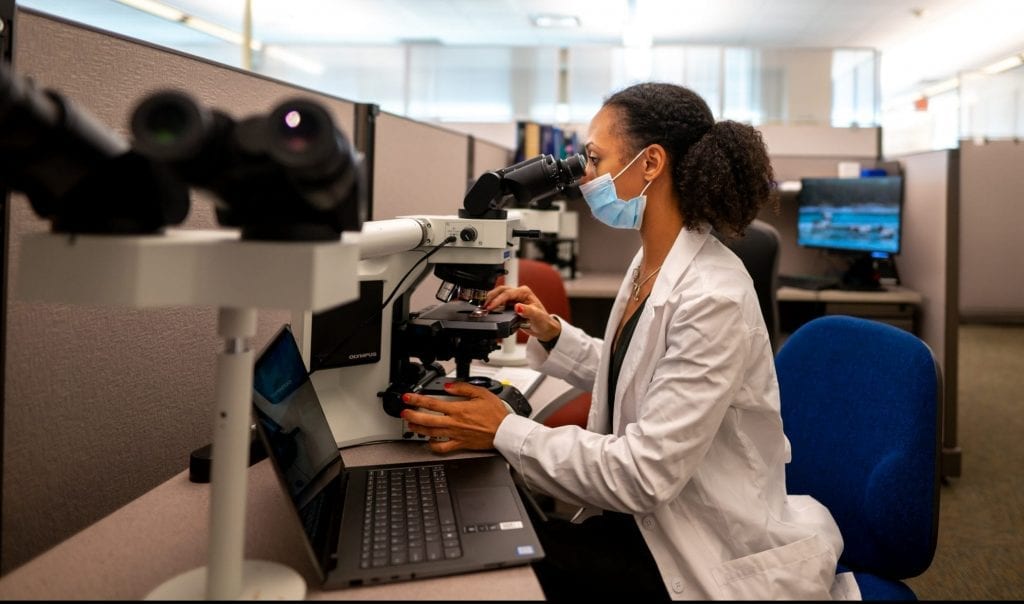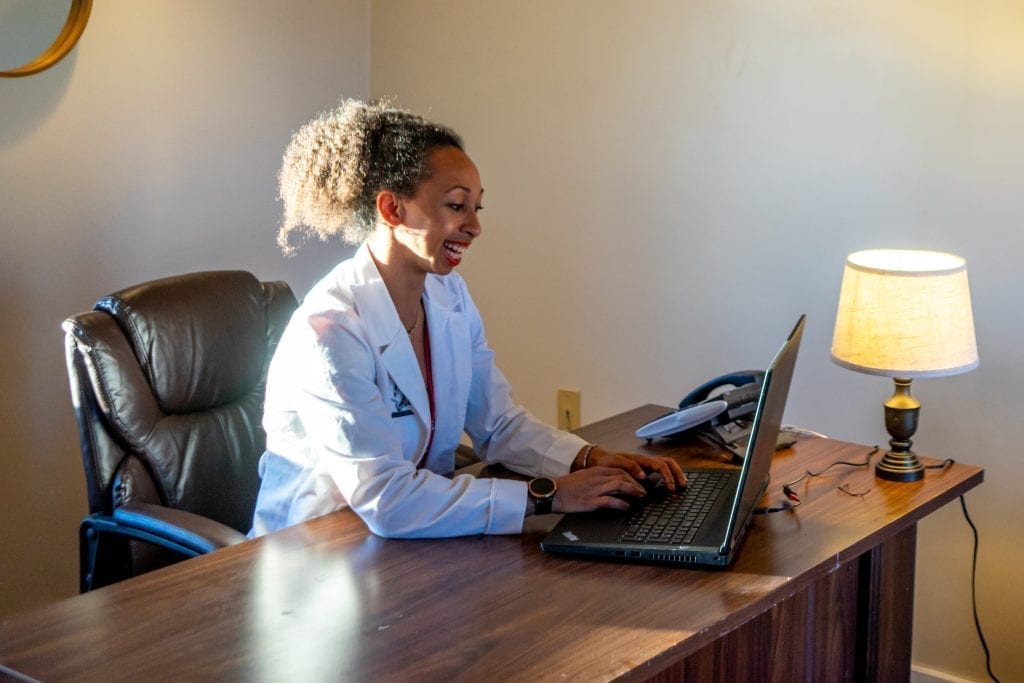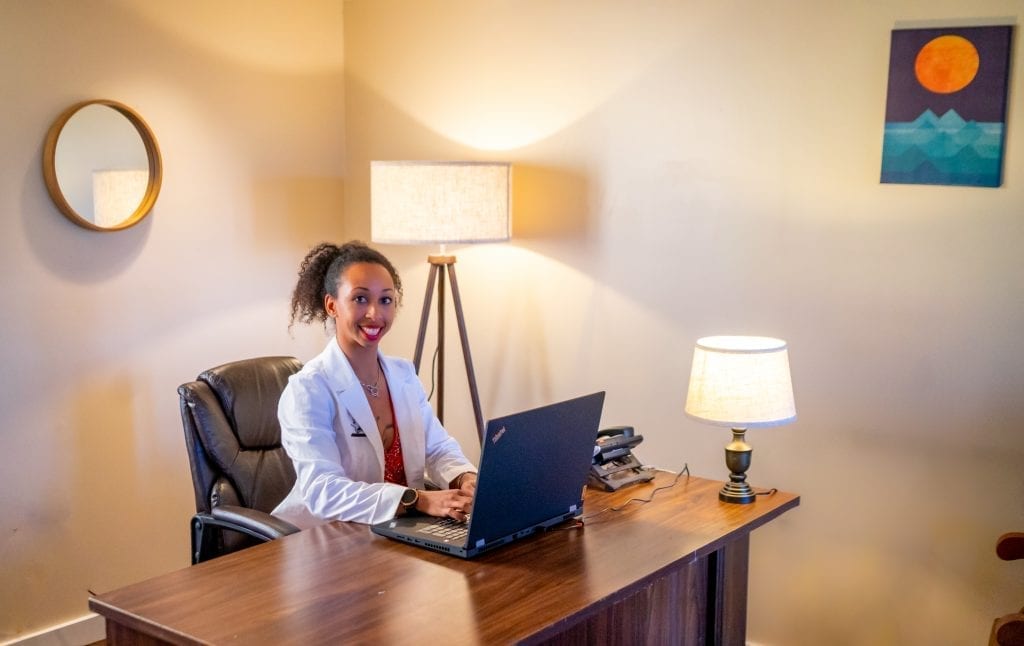As a cancer survivor, I understand how scary and confusing it is to receive life-changing news. I’ll never forget being diagnosed with advanced stage lymphoma and right after, a physician asking me, “Do you have any questions?” At the time, all I could think of was “Is this going to kill me?”
Later that day, I was drowning with questions about my diagnosis with no pathologist around to answer them. How was the diagnosis made? Will I go through all the pain of chemotherapy and surgeries for nothing? My loved ones wondered if the pathologist was even right and if we should get a second or third opinion. Truth be told, it wasn’t until I actually became a pathologist that I got my questions answered and could assure my family that the pathologists were correct. The weight of worry during these times is beyond heavy which is why I hope to decrease that weight so patients and their loved ones can concentrate on treatment and healing.
I spend most of my days under a microscope, looking at cells on a glass slide. After I render a diagnosis, I call the clinician, usually an oncologist with the results. I then write up a technical multiple page report, mostly written for other pathologists, in case another pathologist gets a future biopsy on the patient. This is how pathologists have been operating for decades, assuming patients would never see their pathology reports.

Today, with most hospitals offering an electronic medical record, patients can now view these technical reports that even most physicians don’t completely understand or have the time to fully explain in their clinics. This leads to many questions from the patient, but no one is available to answer them. And this is where I come in.
As a pathologist, I am trained to interpret all lab results and pathology reports. As a people person, I love explaining medical concepts to other people. Unfortunately, in traditional pathology practices, pathologists do not regularly interact with patients. So, I needed to figure out a way to merge my skills and passions.
After mentioning this to another pathologist, he recommended I read an article titled, “Please Help Me See the Dragon I Am Slaying” by Booth et al. The pathologists in this paper ran a short-term volunteer pathology education clinic at a hospital while still performing their regular pathology duties. They found that patients loved being able to see their disease and empowered them to continue their fight. The patients had a better understanding of how the pathologists rendered their diagnosis and felt more in control of their lives. After reading this, I felt inspired and motivated to create a similar clinic in the private practice setting.
Establishing Dr. Favia’s Diagnosis Education Clinic
There were many bumps in the road to creating Dr. Favia’s Diagnosis Education Clinic. How does one get malpractice insurance for something insurance companies have never heard of? How can I bill patients when there is no code to input because this service doesn’t exist? It took over a year to get everything up and running, but I can proudly say, I did it.

Patients can make appointments in 15-minute increments for as long as they like so they don’t feel rushed. Ahead of their scheduled appointment, the patient can upload their lab results and pathology reports to a HIPAA secure medical record system that I will review on my Lenovo laptop.
During our meeting, I will answer whatever pathology-related questions they have about their diagnosis. I will explain how the lab processes their specimen to how the pathologist makes the diagnosis. Along the way, I will show pictures of the key parts of the process and representative pictures of their disease on the laptop screen. My services can also be used by healthy individuals who have questions about lab work their physicians order or want an explanation as to what each test means.
I understand the complexity that comes with getting a diagnosis. My goal is to help make the process a little easier in hopes of giving patients the knowledge they need to take control of their health.
For more information or to sign-up, head to www.drfavia.com.
Follow me on Instagram (@felinefavia) to be part of my #LenovoInnovators journey and support my mission to promote health and diversity through medicine and rock climbing.